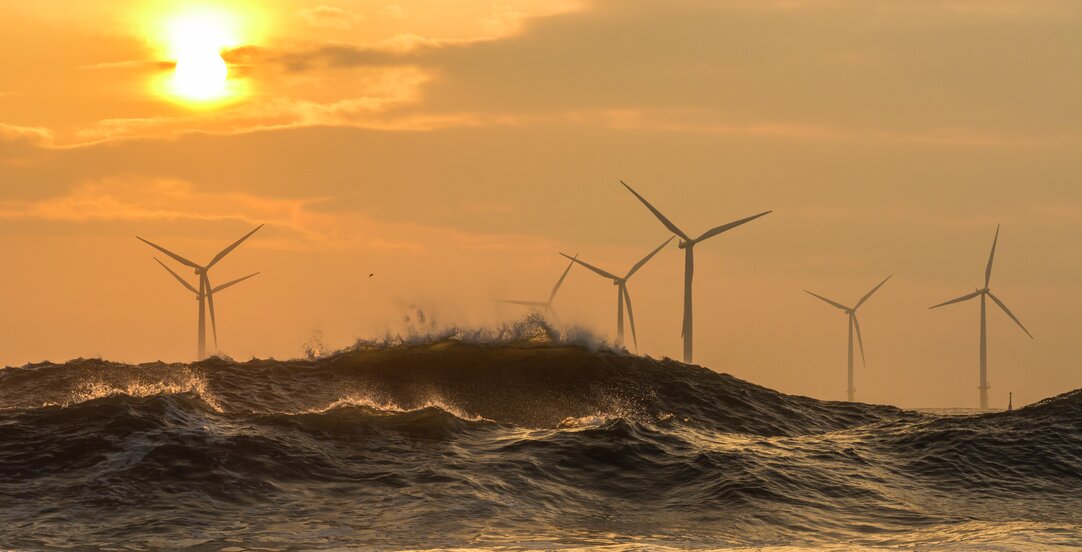Offshore wind power purchase agreements

Power purchase agreements (PPAs) often play a crucial role in project financing of renewable energy projects, including offshore wind. Having a PPA in place to secure the revenue stream for a renewable energy project is often a necessity to attract banks and other project financiers. While a PPA may make an offshore wind project bankable, there are several considerations to be made in the drafting of a PPA. In this article we take a closer look at some important questions surrounding those considerations.
There is no market-standard PPA for offshore wind projects, and we don’t expect this will change. There is no market-standard PPA for onshore wind either, and we see market players taking rather different approaches to drafting, though many of the key elements remain the same. PPAs are to a large extent customised based on each project’s specific characteristics, and we expect this to continue.
Choosing the setup of a PPA for an offshore wind project
A key consideration when choosing what type of PPA suits your project or company is whether to go for a virtual (synthetic) or physical (sleeved) PPA.
A virtual PPA is essentially a contract for difference – a financial swap – where the buyer pays a fixed price for electricity without physical delivery. The electricity is sold in the spot market, and the difference between the fixed price and the spot price is settled by and between the buyer and seller. In the UK sector, government-sponsored ‘Investment Contracts’ have since 2014 played a critical role in encouraging developers to invest in complex and challenging offshore wind projects. These contracts share many similarities with a virtual PPA. As a financial PPA does not involve physical delivery of electricity, it can be entered into between parties that are not part of the same power market.
On the other hand, a physical PPA means that the producer delivers and the buyer offtakes a certain volume of electricity at an agreed price. In practice, the buyer and offtaker under a physical PPA are situated apart geographically. The electricity is in such cases sleeved through e.g. a utility which handles the transfer of energy and money between the producer and offtaker. The utility often acts as the balancing responsible party as well.
How to choose? On the surface there are great similarities between the two main types of PPAs.
Market image and a close connection to the power generation could be important factors for the offtaker, and might suggest use of a physical PPA. How decisive this is for the choice of PPA could however be discussed, as offtakers are rarely connected directly to the generator. In addition, guarantees of origin are used by most players to certify use of renewable power, thereby repairing lack of physical connection to the generator. Market players should also pay attention to the development of EU regulations on inter alia additionality requirements which may favour physical PPAs in the future.
The other main difference between a virtual PPA and a physical PPA is how they are treated under applicable accounting rules such as GAAP vs. IFRS, where the general tendency is that a virtual PPA may potentially be considered as a financial derivative under IFRS rules, but not under GAAP. If the PPA is considered a financial derivative under your accounting rules you may need to regularly re-assess the value of the PPA and reflect changes in value on the balance sheet. This may be a complex as well as time- and cost-consuming exercise, as the fair value of a PPA is a derivative of the forward energy prices.
In addition to deciding whether to enter into a physical or a financial PPA, other important factors to consider at the outset is the duration, pricing structure and volume obligations under the PPA. Corporate PPAs for hydropower and onshore wind in Norway typically have a term of 10-25 years. Pricing models may impact the term of a PPA, as it may be difficult in the current markets to predict price developments long term. In terms of volume three common structures include fixed volumes, delivery and offtake obligations within set minimum and maximum limits (“base load”), as well as delivery and purchase of all volumes actually produced at the renewable energy installation (“as produced” og “pay-as-produced”).
Key clauses to consider for an offshore wind PPA
Aside from often being necessary to obtain financing for an offshore wind project, PPAs are entered into in order to de-risk power market volatility for the parties involved. Producers generally aim to secure a steady income in a volatile power market. Offtakers often have multiple motives – i) to secure access to electricity at predictable prices, ii) to ensure a green source for their power consumption for reporting and marketing purposes, and iii) to become or remain taxonomy-aligned. While these are overarching motivations for each party entering into a PPA, there are several risk factors for both sides which should be mitigated through the specific terms of a PPA. Risk factors include, among others, failing to reach commercial operation on time if the PPA is linked to a project under development and construction; reduced production volume due to technical issues; or curtailment as a result of issues such as limited grid capacity or grid incidents, changes in the applicable regulatory regime, events of default, force majeure, and termination. In the following we will take a closer look at how to reduce risk related to these elements when drafting a PPA.
Delayed or reduced production
It would not come as a surprise if especially first-mover offshore wind projects experience delays in reaching commercial operation or reduced production due to commissioning issues, technical hurdles, or curtailment. Placing risk for delayed or reduced production will therefore be an important element in offshore wind PPAs in Norway. If risk related to delayed commercial operation is placed with the producer, it is important to mitigate such risk in time-sensitive supply and construction contracts entered into by the producer. Risk related to reduced production volumes will depend on the set-up of the PPA. For PPAs under which the buyer will purchase actual produced volumes, risk is limited for the producer. Under PPAs where the producer commits to deliver a specific minimum amount of power, it is advisable to include exemptions from the obligation to deliver a specific volume caused by third-party defaults or interference.
Changes in applicable regulatory regime
The regulatory framework for offshore wind in Norway is still under development. Even after the initial framework is in place, future changes can be expected to mitigate negative effects of the regulatory framework.
Therefore, a PPA should include provisions which take into account that regulatory changes may require amendments to the contractual relationship between the parties to the PPA, and that such amendments shall be negotiated in good faith.
Force majeure
Force majeure clauses are commonly included in commercial contracts, offshore wind PPAs being no exception. Force majeure clauses in common law jurisdictions are at times based on background law. Thus, parties to a PPA should carefully check relevant background law of the governing law applicable to the PPA. In particular, parties should investigate what type of events are considered force majeure events, as well as the extent to which force majeure events relieve a party of its contractual obligations. Preferably, force majeure clauses should be customised to provide for specific risks applicable to the project in question, in order to avoid disagreement should such events occur. The waiver period triggered by a force majeure event should be adapted to account for the likely duration of potential force majeure events.
Events of default and termination
The occurrence of the above-mentioned risk factors may eventually lead to a default under the PPA. Ensuring that consequences of events of default are carefully regulated in a PPA will reduce disagreement in such a situation, saving the parties time and costs. Elements to consider include liquidated damages, obligations, and limitations related to substitute purchases, as well as loss-mitigation obligations for both parties. Clear provisions on when an event of default will give a party a right to terminate the PPA is also advisable.
Finding a commercially acceptable solution
At the early stages of the Norwegian offshore wind adventure it might be challenging to find a risk-sharing model which is commercially acceptable for all parties involved. However, carefully considering the risk factors applicable to specific projects will increase the chances of obtaining a fair and balanced PPA. A fair and balanced PPA would make it attractive to buyers, while providing sufficient security for the project’s income stream; it would also ensure the PPA is acceptable to lenders, and that financing is available at reasonable cost.
- The EU taxonomy is a classification system, establishing a list of environmentally sustainable economic activities, with the overarching aim of steering private investments toward more sustainable activities.
- It applies to large companies and financial market participants and establishes reporting obligations which enter into force gradually from January 1, 2022.
- Although the Taxonomy does not create an obligation to become sustainable, it will undoubtedly increase the pressure on corporates to reduce their CO2 emissions.
- Power Purchase Agreements are suitable instruments for companies to reach their climate targets and may in some cases help entities become EU Taxonomy compliant.
